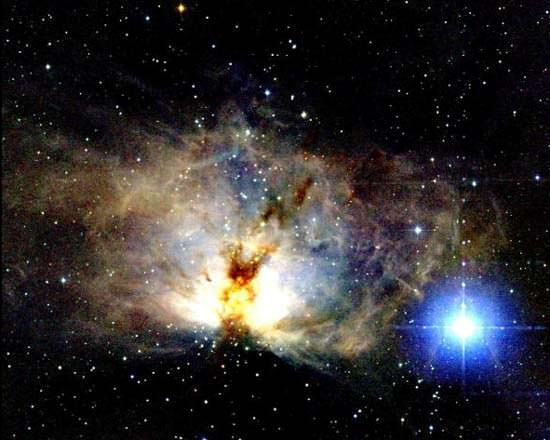[/caption]
Astronomers have developed a method of classifying stars based on their color and some other characteristics. The star classifications are O, B, A, F, G, K, M (you can remember that with the handy mnemonic, “Oh be a fine girl, kiss me”.) O stars are the most extreme group of all. They have the highest temperatures, the most luminosity, and the most mass (oh, and the shortest lives).
An O star appears blue to the eye, and can have a surface temperature of more than 41,000 Kelvin; its color would be better described as ultraviolet, but we can’t see that color with our eyes. The surface temperature of an O star is so great that hydrogen on the surface of the star is completely ionized, but other elements are more visible, like Helium, Oxygen, Nitrogen, and Silicon.
O stars are very massive and evolve very rapidly. Shortly after they form as a protostar, they already have the pressure and temperatures in their cores to begin hydrogen burning. The O stars light up their stellar nurseries with ultraviolet light and cause the clouds of nebula to glow. You can thank O stars for illuminating the beautiful nebula photographs captured by Hubble. O stars burn through their fuel quickly, and can detonate as supernovae in just a few million years.
Some O stars include Zeta Orionis, Zeta Puppis, Lambda Orionis, Delta Orionis.
We have written many articles about stars here on Universe Today. Here’s an article about an O star.
If you’d like more information on stars, check out Hubblesite’s News Releases about Stars, and here’s the stars and galaxies homepage.
We have recorded several episodes of Astronomy Cast about stars. Here are two that you might find helpful: Episode 12: Where Do Baby Stars Come From, and Episode 13: Where Do Stars Go When they Die?

